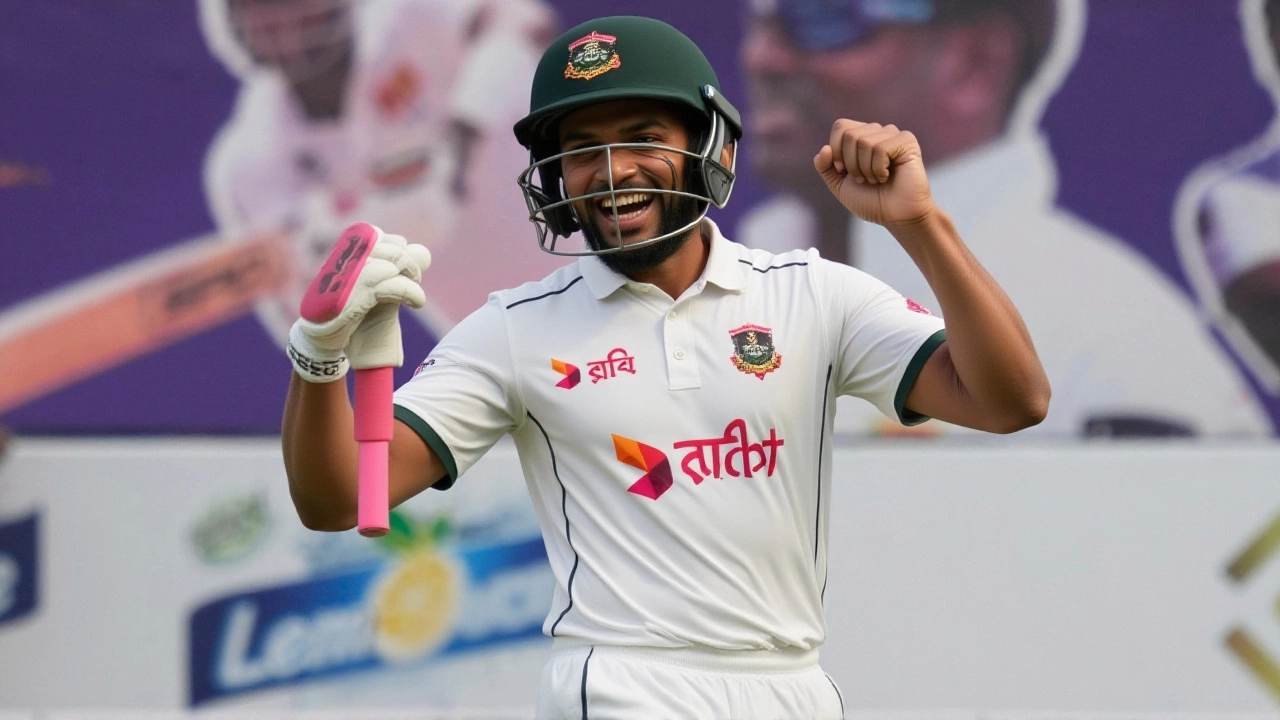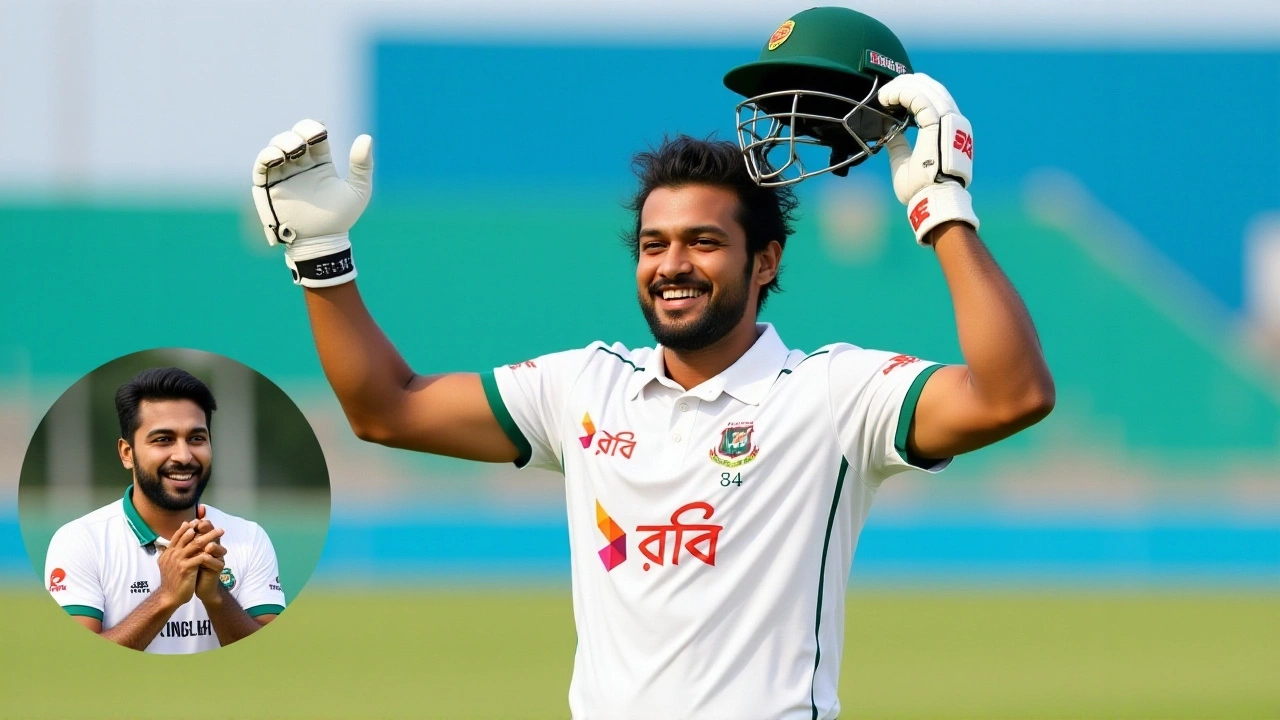On June 17, 2025, at the Galle International Stadium, Mushfiqur Rahim didn’t just bat—he etched his name into cricketing lore. The 38-year-old wicket-keeper batsman from Bangladesh smashed 163 runs against Sri Lanka, becoming only the fourth overseas player ever to score two Test centuries of 150 or more on Sri Lankan soil. The others? Joe Root, Brian Lara, and Stephen Fleming. That’s it. Four names. Across 127 years of Test cricket. And now, Rahim’s among them.
A Legacy Forged in Galle
This wasn’t just another century. It was a bookend to history. Twelve years and three months earlier, on March 8, 2013, Rahim had walked out to bat at the same ground and carved out a monumental 200. Back then, he was 26, brimming with raw talent. Now, at 38, with creaking knees and a body that’s weathered 100 Tests, he returned to Galle’s spin-heavy pitch—and did it again. The pitch, known for its abrasive turn and unpredictable bounce, has swallowed dozens of overseas batsmen. Yet Rahim, with patience and precision, carved out 163 off 284 balls, hitting nine fours and surviving two contentious DRS reviews. The first, in over 138.6, saw Sri Lanka challenge a caught-behind appeal—dismissed. The second, in over 140.2, ended in ‘Umpires Call,’ preserving his innings. He didn’t just survive. He thrived.His partnership with Litton Das (65 off 65 balls) for the fifth wicket added 100 runs. Before that, he’d stitched a 100-run stand with Najmul Hossain Shanto (50), the Bangladesh captain who won the toss and chose to bat. When rain halted play at 423/4, Rahim was still there—159 not out. He finished at 163 as Bangladesh posted 450 in 137.1 overs. The match ended in a draw, but the narrative? Unforgettable.
Why Galle? Why This Feat?
Galle isn’t just any Test venue. Since 1998, it’s been a graveyard for visiting top-order batsmen. Spinners feast here. The pitch cracks under pressure. Even the greats have struggled. Root’s 151 in 2018 was his only 150+ in Sri Lanka. Lara’s 213 in Kandy (1998) and 159 in Galle (2001) were masterclasses. Fleming’s twin 152s in 2000 and 2003 were anchors in tense series. But no overseas batsman had done it twice—until Rahim.His 163 wasn’t flashy. It was gritty. He faced 284 balls. He didn’t hit a six. He didn’t play a cover drive for boundaries. He blocked, nudged, and worked the ball into gaps. His 50 came off 84 balls. His 100, off 187. That’s not the pace of a modern T20 star. That’s the discipline of a Test purist. And it’s why this innings resonates so deeply in Bangladesh.

The Man Behind the Numbers
Mushfiqur Rahim isn’t just a batsman. He’s a symbol. Since his debut in 2005, he’s carried Bangladesh’s batting hopes through droughts and triumphs. As of June 2025, he’s played 100 Test matches—the second Bangladeshi after Shakib Al Hasan to reach that mark. He’s scored 6,450 Test runs, 12 centuries, and three double centuries. His 126 against Ireland in 2023? A statement. His 191 against Pakistan in Rawalpindi in 2024? A statement. And now, this 163 in Galle? A coronation.He retired from ODIs in March 2025, having become Bangladesh’s first player to win 150 international matches—a milestone he reached after scoring 125 against Sri Lanka in Dhaka in 2021. His final ODI century? A blistering 100* against Ireland in Sylhet. He’s done it all. And still, he keeps going.
The Bangladesh Cricket Board, based in Mirpur, Dhaka, has watched him evolve from a raw teenager to a veteran leader. The Sri Lanka Cricket board, which runs Galle’s pitch, knows better than most how hard it is to score here. They didn’t just lose a match—they lost a legend’s legacy.
What This Means for Bangladesh Cricket
For a nation that still fights for respect on the global stage, Rahim’s achievement is more than personal. It’s national pride. He’s the first Bangladeshi to score a Test double century in Sri Lanka. The first to score two 150+ scores there. The first to play 100 Tests and still perform like this. His presence gives young players like Litton Das and Najmul Hossain Shanto something to aspire to—not just stats, but character.His next Test? The second match of the series, starting June 25 in Pallekele. Will he go for 200 again? Unlikely. But will he fight? Absolutely.

Behind the Scenes: The Numbers That Define Him
- 100 Test matches played (second Bangladeshi ever)
- 6,450 Test runs, 12 centuries, 3 double centuries
- 274 ODIs played, 7,795 runs, 9 centuries (retired in 2025)
- 150+ international matches won (first Bangladeshi to do so)
- Only overseas player with two 150+ scores in Tests in Sri Lanka
- Second-highest Test centuries for Bangladesh (behind Shakib Al Hasan’s 15)
He’s not the fastest. Not the flashiest. But he’s the most consistent. And in Test cricket, that’s the highest praise.
Frequently Asked Questions
How rare is it for an overseas batsman to score two 150+ scores in Tests in Sri Lanka?
Extremely rare. Before Mushfiqur Rahim, only three overseas batsmen had done it: Joe Root, Brian Lara, and Stephen Fleming. All three are legends, and each achieved this feat over a span of 25 years. Rahim is the first from a non-Test powerhouse nation to join them, making his achievement even more remarkable given Bangladesh’s relative youth in international cricket.
Why is Galle International Stadium so difficult for overseas batsmen?
Galle’s pitch is infamous for its sharp spin, uneven bounce, and rapid deterioration. Since 1998, it’s produced more spin-friendly results than any other Test venue in Sri Lanka. The surface cracks under pressure, and even top-order batsmen often struggle to adapt. Rahim’s ability to score two 150+ innings here, 12 years apart, speaks to his technical mastery and mental resilience.
What’s the significance of Rahim’s 100th Test match?
Reaching 100 Tests is a milestone few achieve, especially for players from emerging cricket nations. Rahim is only the second Bangladeshi after Shakib Al Hasan to do so. His longevity—playing since 2005—is a testament to his fitness, adaptability, and leadership. He’s been the backbone of Bangladesh’s batting lineup through multiple eras of transition.
How does Rahim’s record compare to other top Bangladeshi batsmen?
Among Bangladesh’s top batsmen, Rahim ranks second in Test centuries (12), behind Shakib Al Hasan (15). But unlike Shakib, who’s an all-rounder, Rahim is a pure batsman and wicketkeeper. His 6,450 Test runs are the most by any Bangladeshi wicketkeeper. He’s also the only Bangladeshi to score a double century in Sri Lanka and the only one with two 150+ scores there.
Why did Rahim retire from ODIs, and how did it impact his Test career?
Rahim retired from ODIs in March 2025 after becoming Bangladesh’s first player to win 150 international matches. He cited focus on Test cricket and physical recovery as reasons. The move allowed him to concentrate on longer formats, and his performances since—like the 191 against Pakistan and 163 in Galle—show he’s still at his peak in Tests. His ODI exit wasn’t a decline; it was a strategic pivot.
What’s next for Mushfiqur Rahim in Test cricket?
With the second Test against Sri Lanka starting June 25 in Pallekele, Rahim will aim to add another century. At 38, he’s not chasing records—he’s chasing legacy. He’s hinted at playing through the 2026 home series against India and possibly the 2027 World Test Championship final. His goal? To finish as Bangladesh’s most decorated Test batsman, with 15 centuries and a reputation as the man who made Galle bow to him twice.

